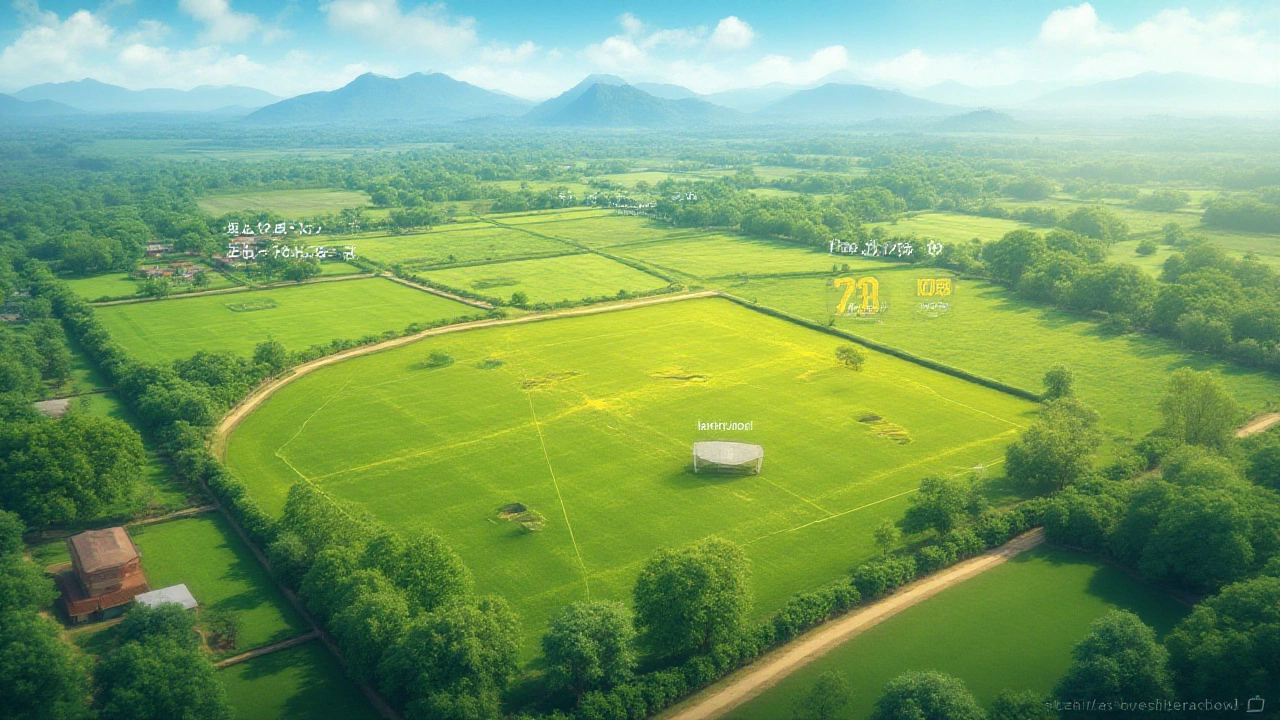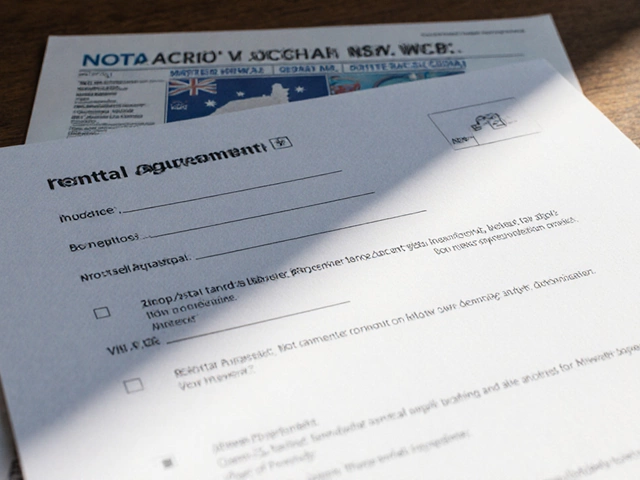Picture standing at one end of a vast stretch of open land. The grass is knee-high, the wind is whistling, and your feet are itching to walk end to end—just to see how far that really is. The sign says “20 acres,” but what does that mean if you’re used to counting distance in miles? Oddly enough, most people can’t visualize 20 acres, yet it’s a land size you’ll see all over real estate brochures and land listings. Here’s the wild thing: 20 acres sounds huge, but when it’s turned into miles, the number might surprise you. Let’s clear up the confusion, give you solid comparisons, and show you exactly what 20 acres looks and feels like in real life.
The Math: Breaking Down Acres into Miles
Alright, time for the nuts and bolts. An acre is a unit of area—not distance. So, an “acre” tells you how much space you’re working with, but not a straight-line measurement. One acre covers 43,560 square feet. Twenty times that? You’ve got 871,200 square feet. Still sounds abstract, right? So, how does that compare in miles?
Let’s convert. There are 5,280 feet in a mile. If you stack every single foot of those 20 acres into a straight, narrow line (which you can’t physically do, but just for the sake of math), you’d get:
- 871,200 sq ft ÷ 5,280 ft = about 165 miles of land strip just 1 foot wide. But, of course, property isn’t shaped like a ribbon.
What about a square plot? If your 20 acres is a perfect square, you’d want to know the length of one side. The area formula is side x side. So:
- side length = square root of 871,200 = about 933 feet per side
- Convert feet to miles: 933 ÷ 5,280 = about 0.177 miles (about 930 yards, so just under 2/10ths of a mile)
If you walked the perimeter, it’s 4 sides: 933 feet × 4 = 3,732 feet / 5,280 = 0.71 miles around. That’s almost three-quarters of a mile just to circle it. How far is 20 acres in miles? If you’re thinking distance from one end to the other, it’s roughly between 900 and 2,600 feet, depending on the layout.
Comparing 20 Acres to What You Know
The numbers are helpful, but not everyone thinks in feet or miles. So what can you actually compare 20 acres to?
- Football Fields: A standard American football field (including end zones) is 57,600 square feet. Divide 871,200 by 57,600 and you get a bit over 15 football fields.
- City Blocks: The size of a city block varies, but in Manhattan, it’s about 264 by 900 feet, so one block covers about 2.18 acres. 20 acres equals around 9 New York City blocks.
- Sizable Parks: For example, Bryant Park in New York is around 9.6 acres—so 20 acres is just over twice the size.
- Car Parking Lots: A tight rule of thumb: you can fit about 160 cars per acre, so 20 acres could fit roughly 3,200 cars. That’s a mega mall parking lot.
| Comparison | Equivalent |
|---|---|
| Football Fields | 15+ fields |
| NYC City Blocks | 9 blocks |
| Bryant Parks | 2 parks |
| Parking Spaces | About 3200 cars |
All that said, 20 acres is more than enough for a small farm, a decent recreational park, or even a small neighborhood, depending on how you develop it.

Visualizing Land: Shapes and Perimeter Tips
Here’s the quirky part about land: it comes in all shapes. You might have a neat square, a long rectangle, or a zigzag plot that follows old roads or rivers. The shape really determines what the land feels like—and what you can do with it.
With a square 20-acre parcel, you’ve got about 933 feet per side. Stand at one fence post; you can squint and just barely see the other. A rectangle? Say your land is twice as long as it is wide. Width becomes about 660 feet, and length about 1,320 feet. So if you had to jog from one short side to the other, you’d be doing a quarter mile (1,320 feet equals one-quarter mile, perfect for a standard running lap).
Land rarely stays a neat geometric form, though. Fencing an irregular 20-acre plot could add up if the perimeter gets all jagged. For a typical hobby farm, people want enough space to separate homes from livestock, leave room for gardens, and maybe add a pond. If you’re visual and want to plot it in real life, take a standard tape measure—100 feet is about the length of two basketball courts end to end. Pace it out ten times and you’re just a bit further than one long edge of a square 20-acre lot.
Here’s a helpful tip: aerial images (like Google Earth) can let you map and measure your land, including perimeter walks or property lines. If you set your measuring tool to feet, just remember that anything around 900 to 1,300 feet is probably one side of a 20-acre patch, depending on its shape. Bring a friend along to help—walking the whole perimeter is a solid workout!
Uses and Value of 20 Acres: What Can You Do With That Space?
With 20 acres, you’re sitting on a plot big enough to launch a lot of dreams. Farmers gravitate toward this size because it’s manageable—bigger than a hobby garden, but not a full-scale industrial farm. It’s also enough space to raise livestock, plant trees, or even carve out your own private trail system.
Current figures say the average single-family U.S. home is built on just 0.2 acres, so 20 acres is equal to 100 average home lots. If you’re buying to build, you’ve got room for horse stables, a large pond, solar arrays, or just to stretch out with no neighbors in sight.
Developers like 20-acre lots for small subdivisions or mini-housing developments. It’s not uncommon for rural schools, recreation areas, or event spaces to be planned on plots this size. It’s a sweet spot for privacy—big enough to hear only birds, but not so large you need a full-time staff to maintain the grounds.
Land value of 20 acres? That varies wildly based on location, utilities, and zoning. In rural Kansas, you might snag 20 acres for under $100,000, but near cities or scenic areas, prices can easily skyrocket to over a million dollars for the same space. Tip: before you buy, check local zoning laws and talk to neighbors about water, wildlife, and seasonal quirks.

How to Calculate and Measure Your Own Acres
If you’ve got a chunk of land (or you’re thinking about getting one), how can you check the size for yourself? Here’s how you do it, step by step:
- Find out the shape of your plot—square, rectangle, L-shaped? For straight-edged plots, you can use a simple measuring tape or surveyor’s wheel.
- For rectangles or squares: Measure the length and the width (in feet). Multiple length x width = area in square feet. Divide by 43,560 to get acres.
- For triangular or odd-shape plots, break the property up into regular shapes, calculate square footage of each, then add them together and convert the total to acres.
- Online tools: Most county GIS websites offer mapping tools. Websites like Google Earth let you plot distances and get quick perimeter measurements.
People sometimes over- or underestimate. A quick walk with a rolling measure or a good GPS app can keep you honest. If the land is forested or hilly, drones fitted with mapping cameras are getting popular with both surveyors and new landowners. Double-check the plat map at your local records office for boundary specifics. If there’s ever a dispute or chance of encroachment, getting a professional surveyor is worth every penny.





